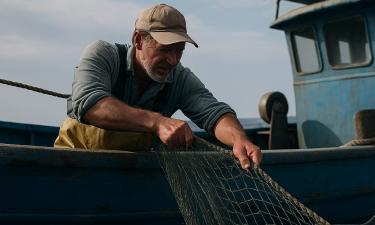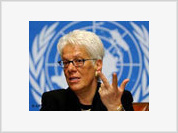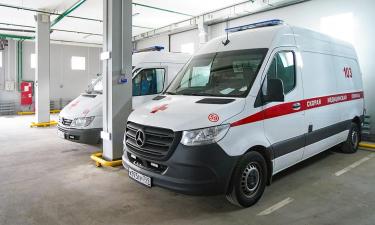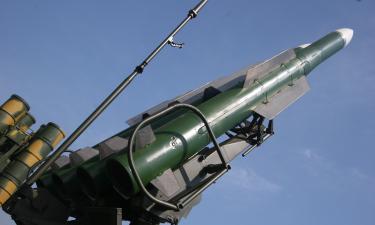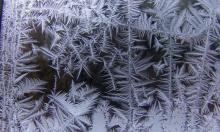IAEA senses Iranian nuclear trace?
The International Atomic Energy Agency (IAEA) has made a considerable contribution to the incitement of anti-Iranian sentiment. A delegation of the organization headed by Belgian General Herman Nakertsom returned from the Islamic Republic and issued a statement on February 22, complaining that the Iranian side did not let the inspectors examine its "key military objective" in Parchin.
The IAEA inspectors stressed that they sought permission to inspect this facility in January of this year, but were refused twice. On February 21, Iranian media reported that a visit to Iran's nuclear facilities was not included in the program of the visit by IAEA inspectors. The question is, what was the point for the nuclear experts to visit the Islamic Republic?
Why is the international community so interested in the object in Parchin? According to the IAEA, Iran may be developing nuclear weapons here. This site was specifically mentioned in the November report of the inspectors of the organization. It did not rule out that Tehran could indeed develop nuclear weapons.
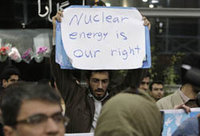
The Iranian leaders have strongly rejected the findings of the reporters, but did not let IAEA inspectors into the facility, reinforcing the suspicions that the Islamic Republic is interested in something more than the peaceful atom. What is the object in Parchin? According to various sources, it is located in a mountain range Bardzhamali only 30 (according to other sources, 20) kilometers southeast of Tehran and north-west of the village with the same name.
According to Israeli intelligence, the object may somehow be related to the uranium enrichment plant at Fordo under Kum. As for Parchin, according to the findings of the experts from the U.S. and Israel, there is a range for bench testing of new rocket engines produced by the union of Shahid Hemat Industrial Group that has been active for nearly 20 years.
The interest in this object was expressed by Iran's opponents a long time ago. According to the information distributed on December 15, 1997 by The Washington Post obtained through the spy satellites data, this range hosted at least six (and possibly eight) tests of "Shahab" ballistic missiles engines capable of hitting targets at a distance of 1,500 kilometers.
Gradually, the situation around Parchin was getting tenser. In August of 2004 the United States indicated that Iran may be developing nuclear weapons at the facility. In September the US threatened the Islamic Republic with a possible strike if Tehran does not raise the veil of secrecy surrounding this facility.
At first the Iranian side prevented the inspection, but in January 2005 they finally agreed to let the IAEA experts in. Nothing suspicious was found at the facility. The experts were allowed to take samples of soil at the site, and the results of the analysis showed no elevated radiation background and did not give clues about possible Iranian nuclear weapons. Nevertheless, the West has pointed out that the examination was too "brief" and that the inspectors were not allowed in all rooms at this facility. A theory emerged that particularly powerful non-nuclear warheads for "Shihab-3" missiles may be developed and tested at Parchin. In addition, it was stated that there was no full confidence that it was solely non-nuclear technology.
However, even this failure did not make those who believe in the existence of Iran's nuclear program stop the search. American and Israeli experts believe that Iran deceived the IAEA inspectors. Meanwhile, Tehran is still not going to concede to its opponents. As soon as the West began discussing the "Parchin incident," Iran reiterated its readiness to deliver preventive strikes against its enemies "if the national interests of the Islamic republic are threatened." The Western media has been quoting a statement of the Deputy Chief of General Staff of the Armed Forces of Iran Mohammad Hejazi, made in an interview with Iranian news agency Fars.
The last scandal was preceded by another one that occurred a week earlier. The West was actively discussing what to do with Iran after the commissioning of an additional three thousand centrifuges at the uranium enrichment plant at Natanz. The number of working centrifuges there reached has nine thousand. The new incident with Parchin complicated the situation even more.
Until the international experts are allowed the access, the IAEA does not intend to conduct new negotiations with Tehran. There is no doubt that "Parchin incident" will be used for additional pressure on Iran, including tougher sanctions. It is not ruled out that in the event of Tehran's continued perseverance it can be one of the reasons for an aggression against it.
However, so far there are not that many reasons for serious concerns. We cannot rule out the fact that the situation is similar to the events of 2004-2005, when Iran, after frustrating its opponents, will let the experts into Parchin, once again winning the time to prepare to repel possible aggression.
Sergei Balmasov
Pravda.Ru
Subscribe to Pravda.Ru Telegram channel, Facebook, RSS!
